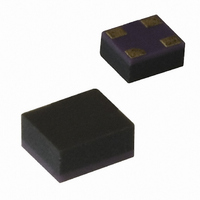HMPP-3892-TR1 Avago Technologies US Inc., HMPP-3892-TR1 Datasheet - Page 4

HMPP-3892-TR1
Manufacturer Part Number
HMPP-3892-TR1
Description
DIODE PIN SWITCH 100V 1A MINIPAK
Manufacturer
Avago Technologies US Inc.
Type
Switchr
Datasheet
1.HMPP-3892-TR1.pdf
(12 pages)
Specifications of HMPP-3892-TR1
Package / Case
4-MiniPak (1412)
Diode Type
PIN - 2 Independant
Voltage - Peak Reverse (max)
100V
Current - Max
1A
Capacitance @ Vr, F
0.3pF @ 5V, 1MHz
Resistance @ If, F
2.5 Ohm @ 5mA, 100MHz
Configuration
Anti-Parallel
Reverse Voltage
5 V
Forward Continuous Current
1 A
Frequency Range
SHF
Termination Style
SMD/SMT
Carrier Life
0.2 us
Maximum Diode Capacitance
0.3 pF at 5 V
Maximum Operating Temperature
+ 150 C
Maximum Series Resistance @ Maximum If
2.5 Ohms at 5 mA
Maximum Series Resistance @ Minimum If
3.8 Ohms at 1 mA
Minimum Operating Temperature
- 65 C
Mounting Style
SMD/SMT
Operating Temperature Classification
Military
Mounting
Surface Mount
Operating Temperature (max)
150C
Operating Temperature (min)
-65C
Applications Frequency Range
SHF
Lead Free Status / RoHS Status
Contains lead / RoHS non-compliant
Power Dissipation (max)
-
Lead Free Status / Rohs Status
Compliant
Available stocks
Company
Part Number
Manufacturer
Quantity
Price
Company:
Part Number:
HMPP-3892-TR1
Manufacturer:
AVAGO
Quantity:
61 500
Company:
Part Number:
HMPP-3892-TR1
Manufacturer:
Agilent
Quantity:
222
Part Number:
HMPP-3892-TR1
Manufacturer:
AGILENT
Quantity:
20 000
Typical Applications
Figure 6. Simple SPDT Switch Using Only Positive Bias.
Figure 8. Very High Isolation SPDT Switch, Dual Bias.
Applications Information
PIN Diodes
In RF and microwave networks, mechanical switches and
attenuators are bulky, often unreliable, and difficult to
manufacture. Switch ICs, while convenient to use and
low in cost in small quantities, suffer from poor distortion
performance and are not as cost effective as PIN diode
switches and attenuators in very large quantities. For over
30 years, designers have looked to the PIN diode for high
performance/low cost solutions to their switching and
level control needs.
In the RF and microwave ranges, the switch serves the
simple purpose which is implied by its name; it operates
between one of two modes, ON or OFF. In the ON state,
the switch is designed to have the least possible loss. In
the OFF state, the switch must exhibit a very high loss
4
RF 1
RF 1
BIAS 1
3
2
2
1
RF COMMON
4
1
3
4
RF COMMON
4
3
BIAS
2
1
BIAS 2
RF 2
3
2
4
1
RF 2
RF 1
Figure 7. High Isolation SPDT Switch Using Dual Bias.
Figure 9. PIN Diode Construction.
(isolation) to the input signal, typically from 20 to 60 dB.
The attenuator, however, serves a more complex func-
tion. It provides for the “soft” or controlled variation in the
power level of a RF or microwave signal. At the same time
as it attenuates the input signal to some predetermined
value, it must also present a matched input impedance
(low VSWR) to the source. Every microwave network which
uses PIN diodes (phase shifter, modulator, etc.) is a varia-
tion on one of these two basic circuits.
One can see that the switch and the attenuator are quite
different in their function, and will therefore often require
different characteristics in their PIN diodes. These proper-
ties are easily controlled through the way in which a PIN
diode is fabricated. See Figure 14.
Bulk Attenuator Diode
Epi Switching Diode
N+ Diffusion
3
2
Metal Contact
Contact Over
P+ Diffusion
4
1
RF COMMON
BIAS
P+ Diffusion
N+ Substrate
2
3
4
1
Epi
I-Layer
Bulk
I-Layer
RF 2



















